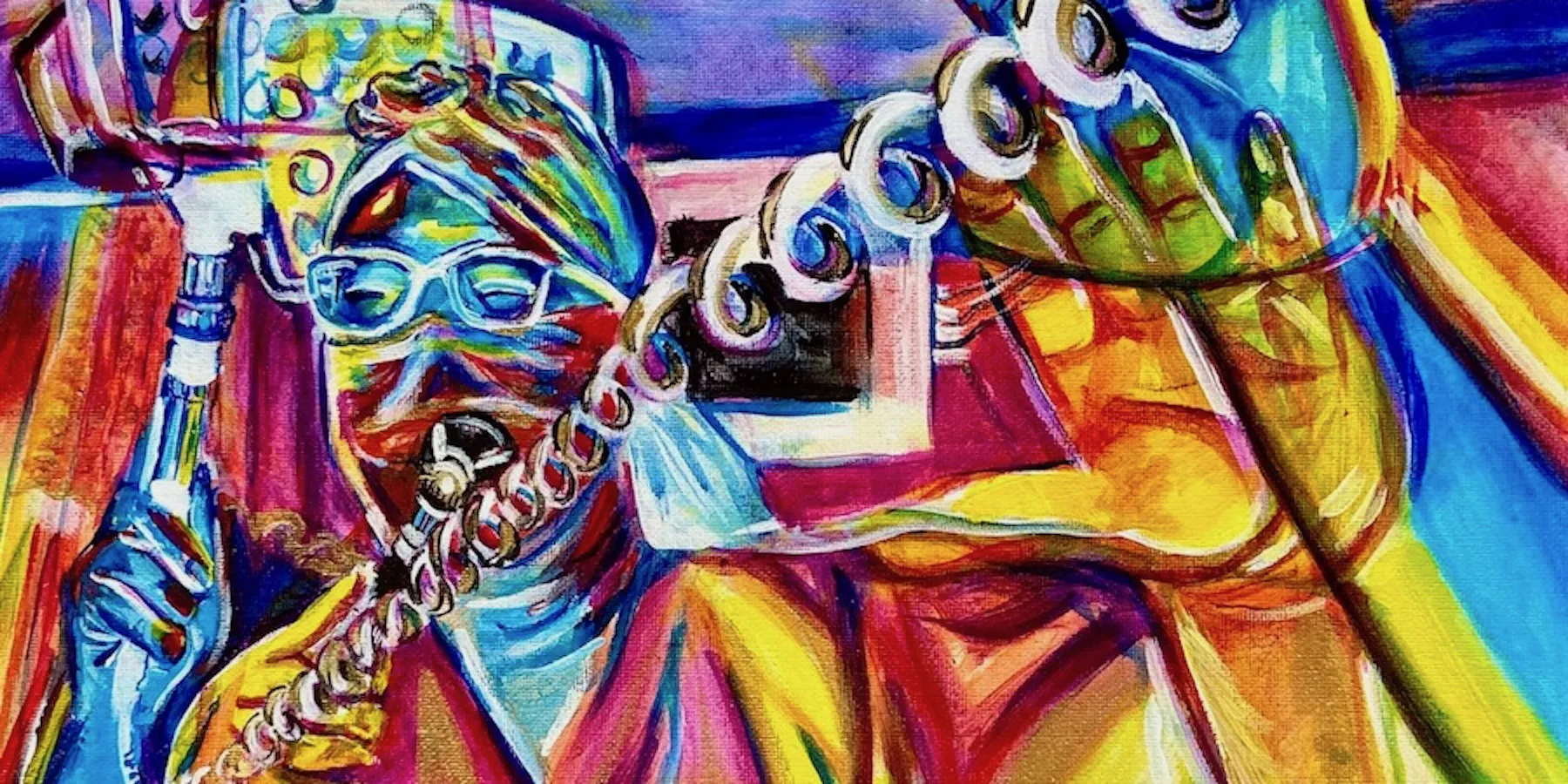Abstract
This group of paintings portrays the beauty and strength of frontline clinicians in a hectic emergency room during the COVID-19 pandemic. Head-to-toe personal protective equipment covers their fear. Vibrant colors and strange perspectives help question the reality through which they and their patients lived.
Figure 1. COVID ENT Exam, 2020

Media
Acrylic on canvas, 16" x 20".
Caption
During the worst peaks of the COVID-19 pandemic, I painted frontline heroes gowned to treat a dreadful explosion of sick patients.
Figure 2. Reflection, 2020
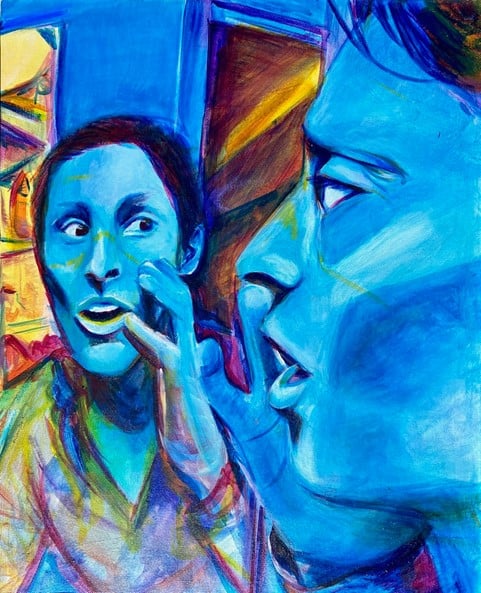
Media
Acrylic on canvas, 16" x 20".
Caption
This self-portrait reveals my reflection on a 12-hour work shift and on protecting my family. Even after our skin peels off the bridge of our noses, we in the emergency room take responsibility for our physical and emotional stress and practice repetitive routines to contain the virus. Beyond the skin layer, we are all the same, so I layered saturated yellow, cerulean blues, and magenta to create a multidimensional pallet.
Figure 3. Respirator Perspective, 2020
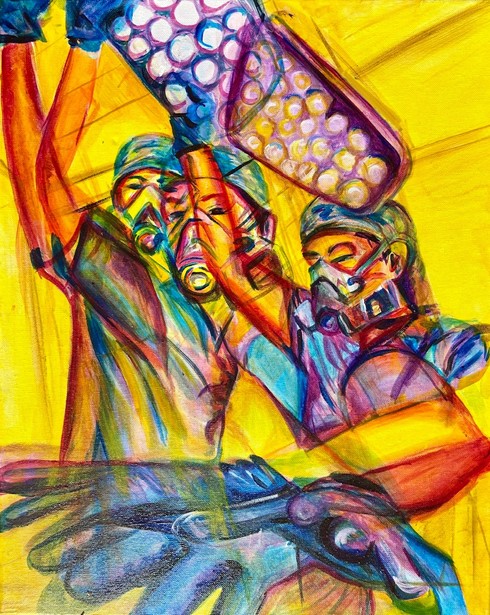
Media
Acrylic on canvas, 16" x 20".
Caption
Fear of an unknown contagion is dreadful, especially without proper personal protective equipment (PPE), so at the beginning of the pandemic, when there was conflicting information on how and when to use our PPE, we relied on each other for support and protection. Now, we are more versatile and confident. Because N95 masks were selling online at triple the normal price, we cold-called the nearest hardware stores every morning to occasionally get a lead about acquiring reusable respirators for members of the team. We wear single-use masks for 12 hours.
Figure 4. Take a Deep Breath, 2020
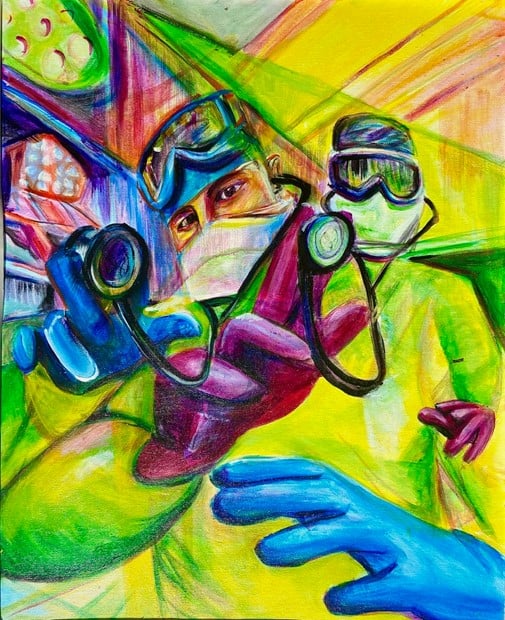
Media
Acrylic on canvas, 16" x 20".
Caption
Sometimes we wear so much gear that, from a patient’s point of view, we look somewhat like a space person approaching. With a shortage of PPE, civilian-donated ski goggles helped keep us safe. Wearing this garb is now routine for us. But from a delirious febrile patient’s perspective, it’s certainly not routine to hear a Darth Vader-like muffled voice say, “Your lungs sound clear.”
Figure 5. Neon Suture, 2020
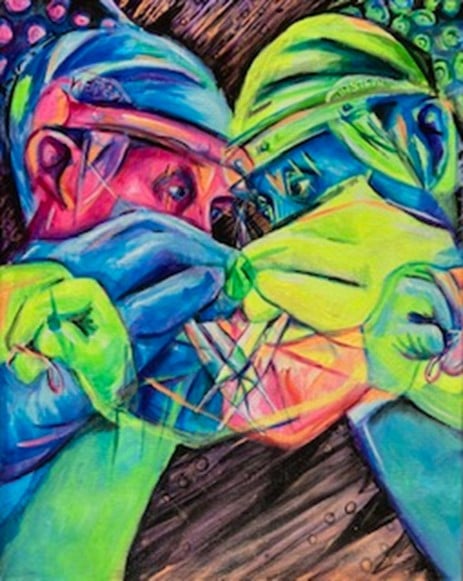
Media
Acrylic on canvas, 16" x 20".
Caption
This is a mirror image of personal space encroaching and superimposing on itself. Two figures are not quite separate. Wavelengths of light bounce, and neon colors attract a viewer’s attention to a seasoned physician assistant’s agile hands.
Figure 6. Moving Forward, 2020
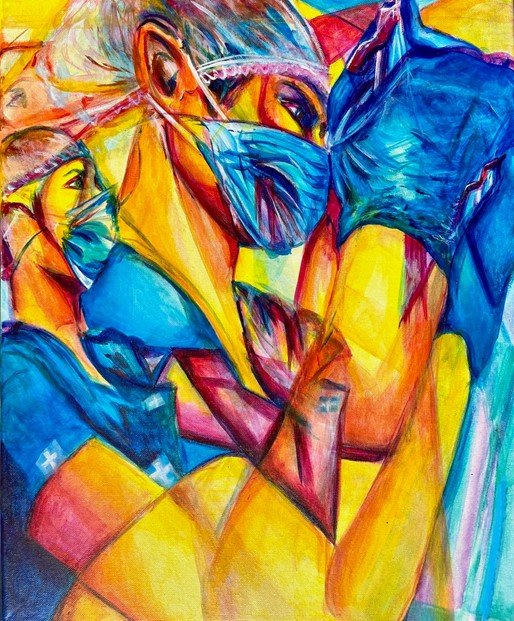
Media
Acrylic on canvas, 16" x 20"
Caption
This portrait, representing a group of “masked heroes,” blends a primary color pallet to create movement. Short of PPE, we tried wearing laminated photos with a sliver of our eyes visible to reassure isolated patients. Patients without family members present just had us, our compassion, smiles, and altruism.
Figure 7. Emergency Room, 2020
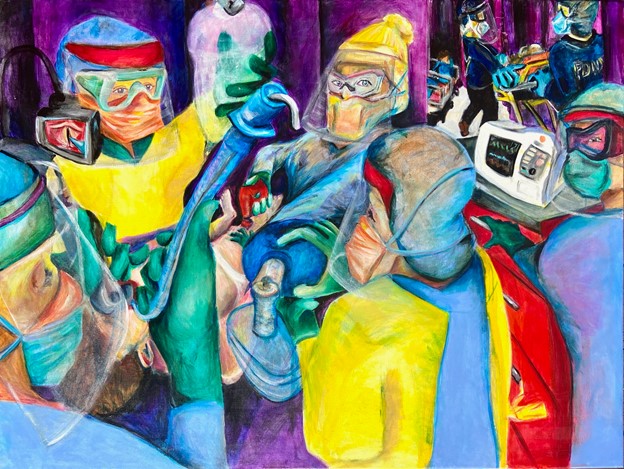
Media
Acrylic on canvas, 30” x 40”.
Caption
Pulling back from a bustling emergency room scene, one can see, through a fog of anxiety, a unified symphony. Each individual medical professional performs a task to try to save the lives of patients in an overwhelmed hospital system.
Figure 8. Diversity in Medical Professionals, 2012-2020
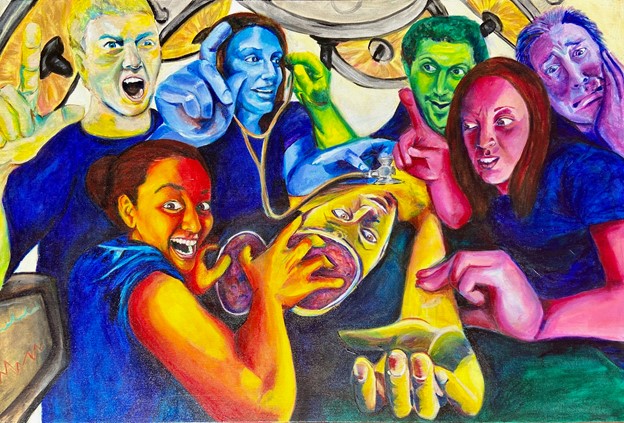
Media
Acrylic on canvas, 24" x 36".
Caption
Whether regular emergency front liners or specialists who dove into the front lines, we all wondered, Will we have mask-less, fear-less, expression-full patient-clinician contact experiences again?
Figure 9. Dimensional Doctor, 2020
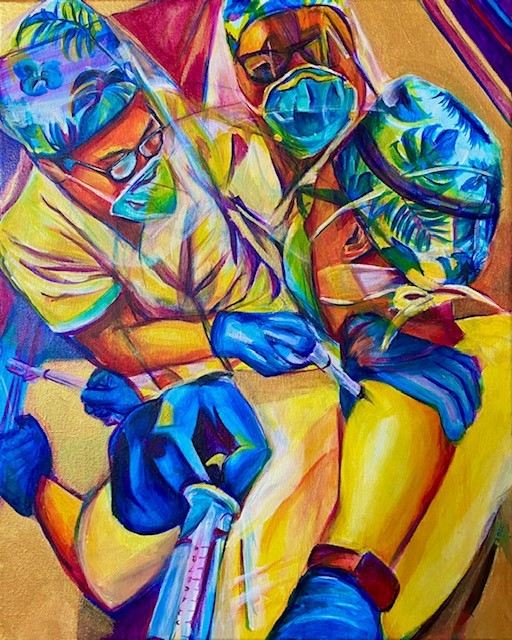
Media
Acrylic on canvas, 16" x 20".
Caption
Bright colors and gold trim represent the multifaceted personalities, good will, and courage of emergency department workers, who keep each other sane and use humor to lighten a dramatic load as they perform their tasks.
Figure 10. Diptych of Closing the Wound, 2020
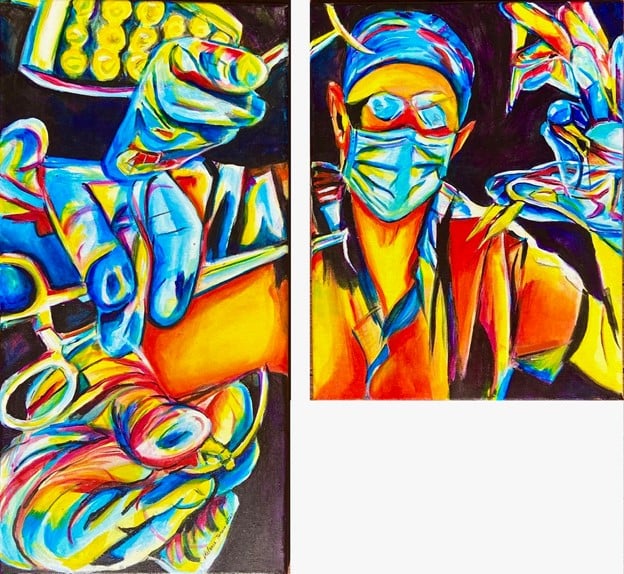
Media
Acrylic on canvas, 10" x 20" and 11" x14".
Caption
The confidence of this physician assistant is seen in his swift movements. With fluidity in tying each suture knot, he closes a wound.
Figure 11. Aortic Vascular Surgery, 2020
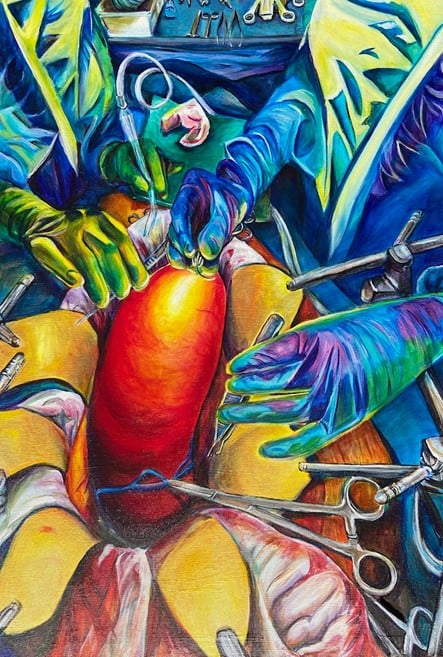
Media
Acrylic on canvas, 24" x 36".
Caption
Specialty surgeries were halted during the pandemic closures, and surgical teams were diverted to caring for patients in intensive care units (ICUs). Some medical professionals lacked experience treating intubated, dying patients, but they quickly adjusted.
Figure 12. Under the Mask, 2020
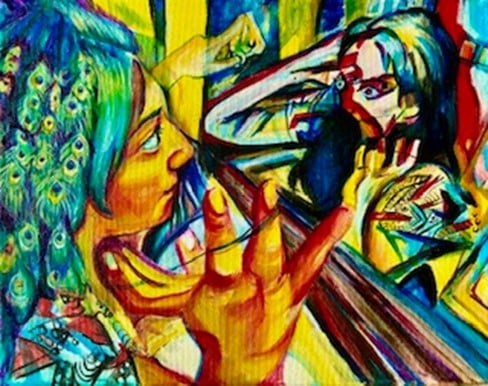
Media
Acrylic on canvas, 11" x 14".
Caption
Imagine after training in surgery for 10 years, you assume responsibility for treating COVID ICU patients. You then contract and struggle with COVID. A mirror here is not used for vanity but to reflect on who we are beneath our masks. Beyond questioning the nightmare of the moment, these professionals see their strength and beauty.
